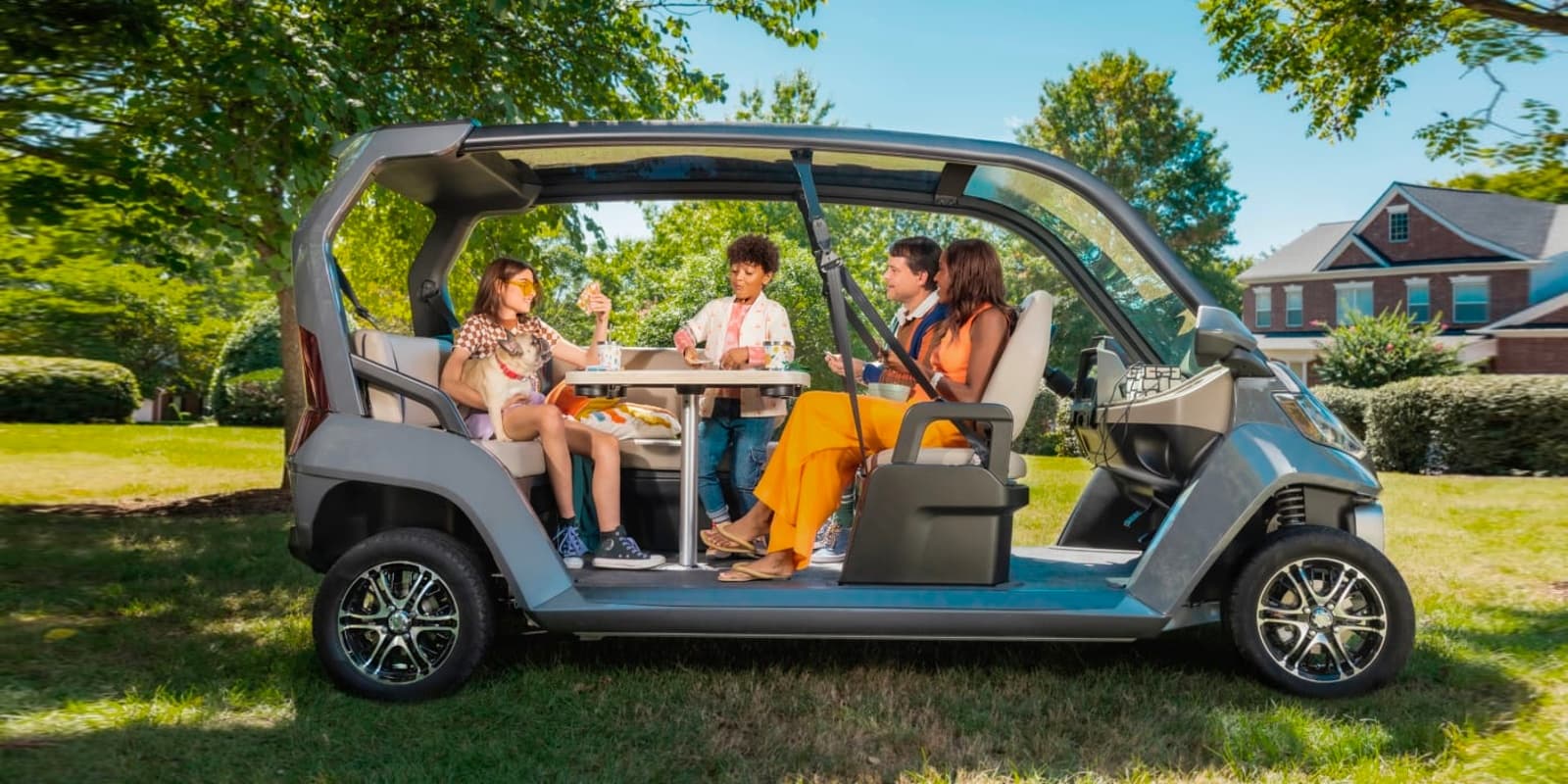
Club Car is one of the country’s biggest golf cart makers, and now the brand has just unveiled a slick new line of high-end electric vehicles that are more like open-air electric cars. Just don’t call the Club Car Cru a “car.”
In fact, these technically aren’t even golf carts either. They’re what’s known as low-speed vehicles (LSVs).
They may look like fancy golf carts, but LSVs are their own class of motor vehicle. They face lower regulatory scrutiny in exchange for being street-legal with a maximum speed of 25 mph (40 km/h). They’re still required to have a number of DOT-regulated safety features like proper seat belts, automotive windshield glass, backup cameras, pedestrian noisemakers, and other safety equipment.
These pint-size electric vehicles make up a small but growing industry in the US, where new LSV companies are starting to crop up with lower-cost alternatives compared to expensive electric cars.
They’re rarely as good-looking as these, though. The Club Car Cru was designed by BMW’s design studio Designworks to totally rethink what an open-air street-legal LSV could be.

The design isn’t entirely open-air, or at least not on the street side. The left side of the vehicle has a glass enclosure. The right side and rear remain open for air flow and easy access to the curb.
The Club Car Cru has an electronically limited top speed of 25 mph (40 km/h), which keeps it street-legal as an LSV. That means it is allowed to drive on most public roads with speed limits of up to 35 mph (56 km/h).
In many densely populated urban areas, that includes nearly every road in city centers as well as many beach communities, islands, and retirement areas. This certainly can’t replace a family car that regularly travels on 50 mph roads, but it should be perfect for cities and planned communities.
That’s what Club Car is banking on, pitching the Cru as an efficient alternative to larger and pricier electric cars.
At an entry price of $27,000 though, it’s not that much cheaper than bargain electric cars these days. It comes in at several thousand dollars more than another popular LSV: the GEM. It’s also around three times the price of newcomers like ~$10,000 Wink electric LSVs from Wink Motors, which offers similar performance but with an enclosed cabin featuring heating and air conditioning like a traditional car.

But the Club Car Cru has something the others don’t have: luxury points. The design features a living room-style interior with swivel front seats that can turn around to face the rear seats when the Cru is parked.
And L-shaped bench in the back and a table make it easy to share a meal or just relax with the entire family. The rear bench fits four kids (unbuckled when parked) or three adults (buckled).
The idea was to allow owners to bring the comfort of an indoor hangout into the outdoors, and essentially carry their living room furniture with them. For planned communities, it allows retirees or other drivers to meet up for impromptu visits in the comfort of their own plush chairs.
The open design of the Club Car Cru likely limits it to warmer areas of the country, which is exactly where the company is focusing its early sales efforts.
As LSV options continue to grow and these types of small electric vehicles become more widely used, you might just see a few cruising your own city soon.
via: Fast Company
FTC: We use income earning auto affiliate links. More.












